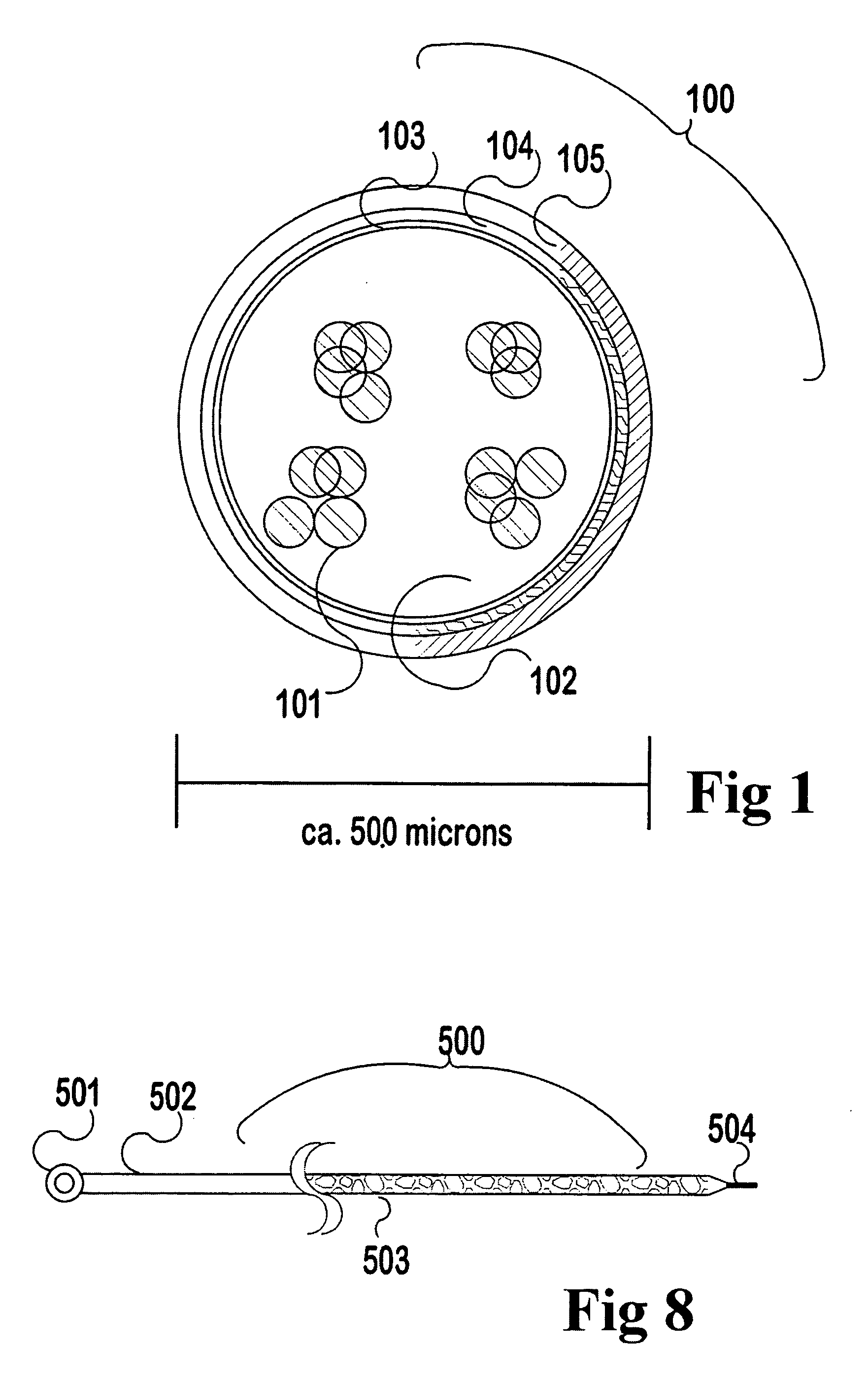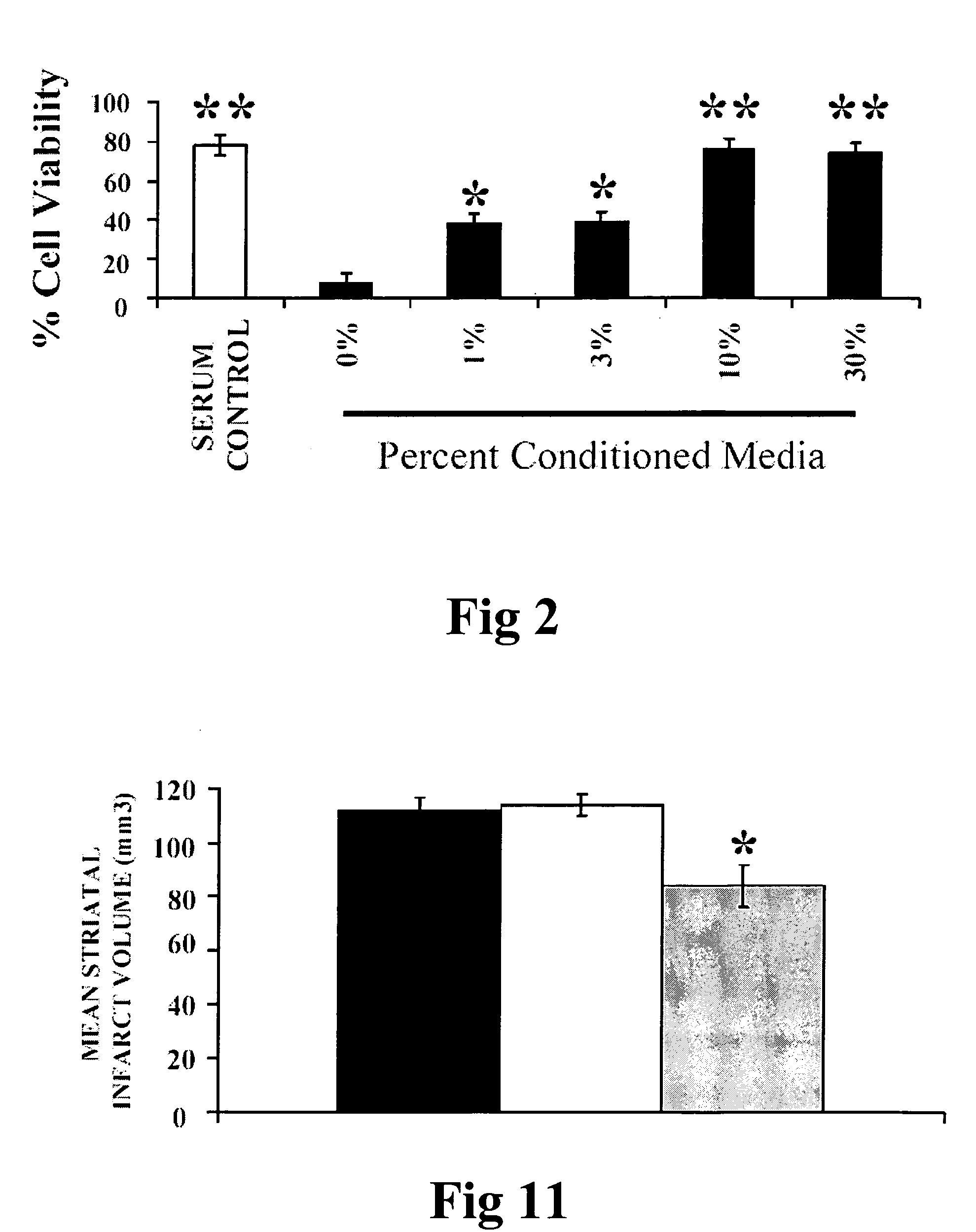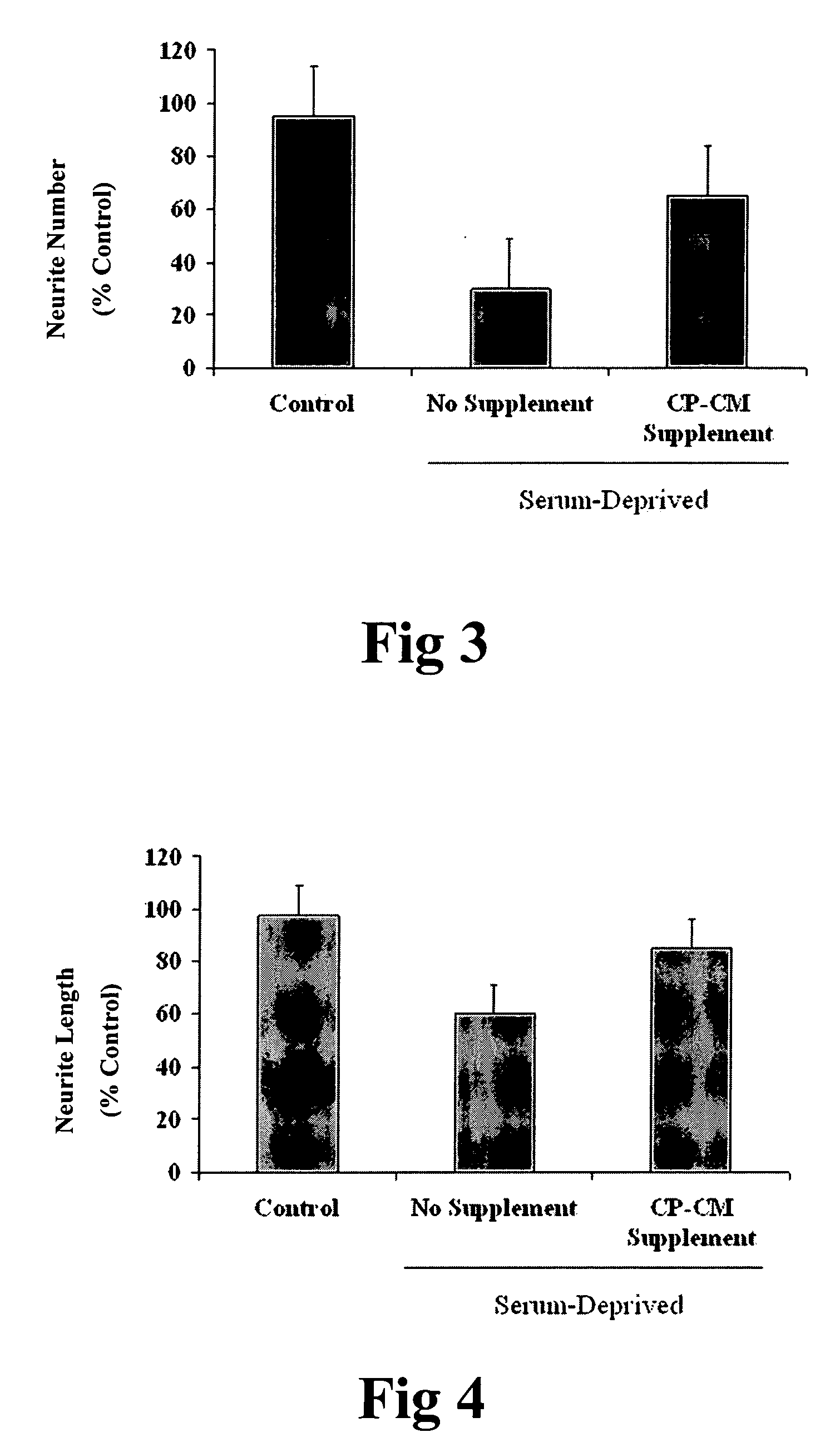Xenotransplant for CNS therapy
a technology of cns and xenotransplant, which is applied in the field of compound for the treatment of some neurological diseases of the central nervous system of a mammal, can solve the problems of unpleasant, dangerous, and inability to reverse, and the inevitable progress of these diseases is slowed, perhaps, but not reversed, and the therapy of the central nervous system (cns) is more difficult than the rest of the body in part, and the introduction of foreign substances directly into the
- Summary
- Abstract
- Description
- Claims
- Application Information
AI Technical Summary
Benefits of technology
Problems solved by technology
Method used
Image
Examples
example 1
Preparation of CP Secretory Cell Implants
[0094] This example relates to the preparation of choroid plexus secretory cells suitable for encapsulation and implantation. All procedures are carried out in “GMP” licensed facilities, including strict infection barriers.
[0095] Neonatal pigs were anaesthetized with ketamine (500 mg / kg) and xylazine (0.15 mg / kg) and killed by exsanguination. The brain was immediately removed and dissected through the midline to reveal the fork of the choroid vessels. The choroid plexus was extracted and placed in Hanks Balanced Salt Solution (HBSS, O-4° C.) supplemented with 2% human serum albumin. The tissue was chopped finely with scissors, allowed to settle and the supernatant removed. Collagenase (Liberase, Roche, 1.5 mg / ml, in 5 ml HBSS at 0-4° C.) was added and the chopped tissues mixed, allowed to sediment at unit gravity (1×g) and the supernatant was again removed. Collagenase (1.5 mg / ml, in 15 ml HBSS at 0-4° C.) was added and the preparation war...
example 2
Delivery of CP Cells
[0119] Thread-like single implants are for several reasons preferred over a loose suspension of globules containing cells. For example, if a single globule breaks, the cells within may be released with adverse consequences such as of immunological rejection, or transfer of latent virus infection that may be carried by the cells. Also, neurosurgeons are understood to prefer to use threads because they resemble existing tubular implants such as shunts, and drainage and monitoring catheters for use in the intracranial ventricles. Surgical techniques for the placement and later removal of these are well established. An ability to remove implants according to the invention is likely to be useful. A significant amount of medical technology exists (e.g. “Medtronic”, California) in relation to shunts, and drainage and monitoring catheters for use in the intracranial ventricles. Therefore, example 2 comprises compatible objects for the delivery of xenotransplants in the...
example 3
Source of Cells
[0123] Selection of choroid plexus cells capable of expressing a given balance of trophic factors, to use the term in a broad sense, is preferably done by selecting a particular species of mammal, and age of mammal from which the cells are to be harvested so that the cells of its choroid plexus already function as required. The age may be anywhere from perhaps mid-gestation or before, when a choroid plexus is identifiable, to somewhere in postnatal life. The output of the choroid plexus—in terms of trophic factors—changes during development of the brain through gestation and for perhaps a year afterwards. Myelination, for example, continues to proceed well after birth. Accordingly, modification of harvested cells in order to manipulate their properties as by restriction of the environment or by introduction of genetic material (DNA) is not expected. However, there may be instances when such steps are indicated. (Restriction, such as measures to adapt the cells to fu...
PUM
| Property | Measurement | Unit |
|---|---|---|
| surface area | aaaaa | aaaaa |
| time | aaaaa | aaaaa |
| time | aaaaa | aaaaa |
Abstract
Description
Claims
Application Information
 Login to View More
Login to View More - R&D
- Intellectual Property
- Life Sciences
- Materials
- Tech Scout
- Unparalleled Data Quality
- Higher Quality Content
- 60% Fewer Hallucinations
Browse by: Latest US Patents, China's latest patents, Technical Efficacy Thesaurus, Application Domain, Technology Topic, Popular Technical Reports.
© 2025 PatSnap. All rights reserved.Legal|Privacy policy|Modern Slavery Act Transparency Statement|Sitemap|About US| Contact US: help@patsnap.com



